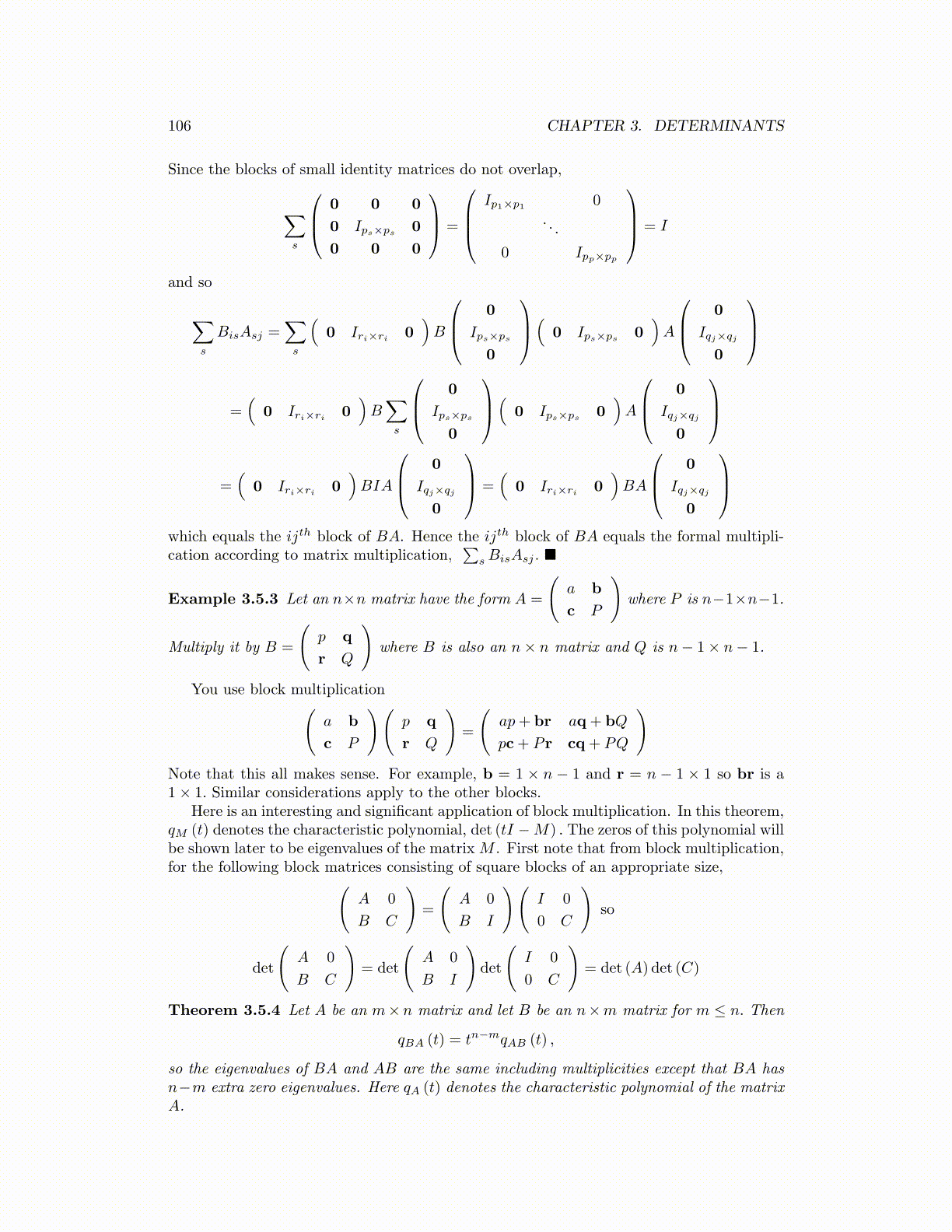
106 CHAPTER 3. DETERMINANTS
Since the blocks of small identity matrices do not overlap,
∑s
0 0 0
0 Ips×ps0
0 0 0
=
Ip1×p1
0. . .
0 Ipp×pp
= I
and so
∑s
BisAsj =∑s
(0 Iri×ri 0
)B
0
Ips×ps
0
( 0 Ips×ps0)A
0
Iqj×qj
0
=(
0 Iri×ri 0)B∑s
0
Ips×ps
0
( 0 Ips×ps0)A
0
Iqj×qj
0
=(
0 Iri×ri 0)BIA
0
Iqj×qj
0
=(
0 Iri×ri 0)BA
0
Iqj×qj
0
which equals the ijth block of BA. Hence the ijth block of BA equals the formal multipli-cation according to matrix multiplication,
∑sBisAsj . ■
Example 3.5.3 Let an n×n matrix have the form A =
(a b
c P
)where P is n−1×n−1.
Multiply it by B =
(p q
r Q
)where B is also an n× n matrix and Q is n− 1× n− 1.
You use block multiplication(a b
c P
)(p q
r Q
)=
(ap+ br aq+ bQ
pc+ Pr cq+ PQ
)Note that this all makes sense. For example, b = 1 × n − 1 and r = n − 1 × 1 so br is a1× 1. Similar considerations apply to the other blocks.
Here is an interesting and significant application of block multiplication. In this theorem,qM (t) denotes the characteristic polynomial, det (tI −M) . The zeros of this polynomial willbe shown later to be eigenvalues of the matrixM . First note that from block multiplication,for the following block matrices consisting of square blocks of an appropriate size,(
A 0
B C
)=
(A 0
B I
)(I 0
0 C
)so
det
(A 0
B C
)= det
(A 0
B I
)det
(I 0
0 C
)= det (A) det (C)
Theorem 3.5.4 Let A be an m×n matrix and let B be an n×m matrix for m ≤ n. Then
qBA (t) = tn−mqAB (t) ,
so the eigenvalues of BA and AB are the same including multiplicities except that BA hasn−m extra zero eigenvalues. Here qA (t) denotes the characteristic polynomial of the matrixA.